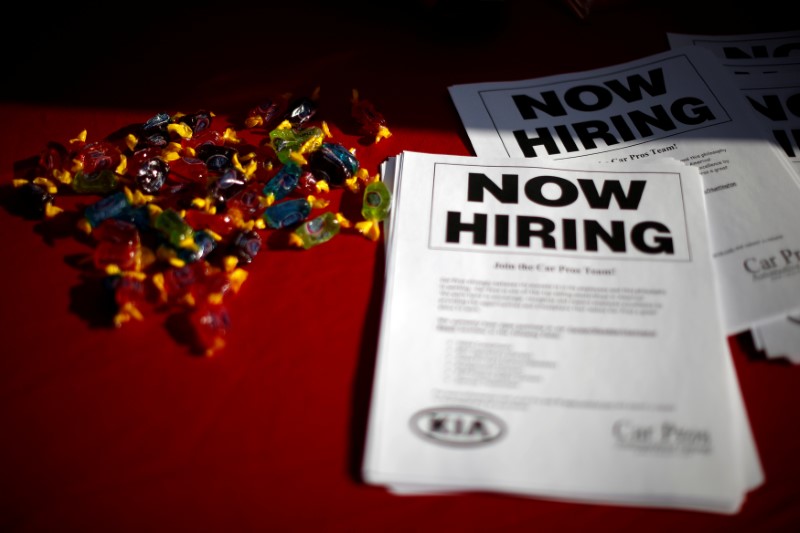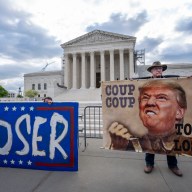By Lucia Mutikani
WASHINGTON (Reuters) – The U.S. economy slowed more than previously estimated in the first quarter amid the weakest consumer spending in nearly five years, but growth appears to have since regained momentum on the back of a robust labor market and tax cuts.
Gross domestic product increased at a 2.0 percent annual rate in the January-March period, the Commerce Department said on Thursday in its third estimate of first-quarter GDP, instead of the 2.2 percent pace it reported last month.
The economy grew at a 2.9 percent rate in the fourth quarter. The downgrade to first-quarter growth reflected weaker consumer spending and a smaller inventory accumulation than the government had estimated last month.
A $1.5 trillion income tax cut package, which came into effect in January, is seen spurring faster economic growth in the second quarter, putting annual GDP growth on track to achieve the Trump administration’s 3 percent target.
Economists, however, caution that the administration’s “America First” policies, which have heightened fears of trade wars, are casting a pall over the economy’s prospects.
The United States is engaged in tit-for-tat trade tariffs with its major trade partners, including China, Canada, Mexico and the European Union. Analysts fear the tariffs could disrupt supply chains, undercut business investment and potentially wipe out the fiscal stimulus.
Growth estimates for the second quarter are as high as a 5.3 percent rate. Economists had expected first-quarter GDP growth would be unrevised at a 2.2 percent pace. An alternative measure of economic growth, gross domestic income (GDI), increased at a brisk 3.6 percent rate in the January-March period. That was revised up from the 2.8 percent pace reported last month.
The average of GDP and GDI, also referred to as gross domestic output and considered a better measure of economic activity, increased at a 2.8 percent rate in the first quarter, instead of the 2.5 percent pace estimated in May.
The income side of the growth ledger was boosted by after-tax corporate profits, which surged at an 8.7 percent rate last quarter rather than the 5.9 percent pace reported in May. The government slashed the corporate tax rate to 21 percent from 35 percent effective in January. After-tax profits rose at a 1.7 percent pace in the fourth quarter.
The U.S. dollar edged lower against a basket of currencies after the data. U.S. stock index futures were trading weaker while prices of U.S. Treasuries were mixed.
CONSUMER SPENDING SLOWDOWN
Growth in consumer spending, which accounts for more than two-thirds of U.S. economic activity, braked to a 0.9 percent rate in the first quarter instead of the previously reported 1.0 percent pace. It was the slowest pace since the second quarter of 2013 and reflected downward revisions to healthcare spending by nonprofits and outlays on finance and insurance services.
Consumer spending grew at a 4.0 percent rate in the fourth quarter. Retail sales reports have suggested consumer spending was regaining speed in the second quarter. Spending is being supported by a tightening labor market, which is gradually boosting wage growth.
A separate report from the Labor Department on Thursday showed new applications for state unemployment benefits rose 9,000 to a seasonally adjusted 227,000 for the week ended June 23, a level that remains consistent with a robust job market.
The unemployment rate is at an 18-year low of 3.8 percent, close to the Federal Reserve’s forecast of 3.6 percent by the end of this year.
Weak domestic demand in the first quarter likely made businesses cautious about stocking warehouses. Businesses accumulated inventories at a rate of $13.9 billion instead of the $20.2 billion pace estimated last month. As a result, inventory investment was neutral to first-quarter GDP growth instead of adding 0.13 percentage point as reported last month.
Data so far suggest that inventories could be a small drag on second-quarter GDP growth.
While the trade deficit in the first three months of the year was a bit bigger than initially thought, it had little impact on growth. Trade is expected to contribute to GDP growth in the second quarter in light of data on Wednesday showing a sharp drop in the goods trade deficit in May.
Growth in business spending on equipment was revised up to a 5.8 percent rate in the first quarter from the 5.5 percent pace estimated last month. Spending on equipment has slowed following double-digit growth in the second half of 2017.
The trend is likely to persist in the second quarter after the government on Wednesday reported an unexpected drop in both orders and shipments of non-defense capital goods excluding aircraft in May.
The moderation in business spending on equipment could undercut the Trump’s administration’s argument that lower corporate tax rates would boost investment. Some companies like Apple Inc have used their tax windfall for share buybacks and dividends.
Investment in homebuilding fell at a 1.1 percent rate in the first quarter instead of declining at a 2.0 percent pace as reported last month. Growth in government spending was raised to a 1.3 percent rate from the 1.1 percent estimated last month.
(Reporting by Lucia Mutikani; Editing by Paul Simao)



















